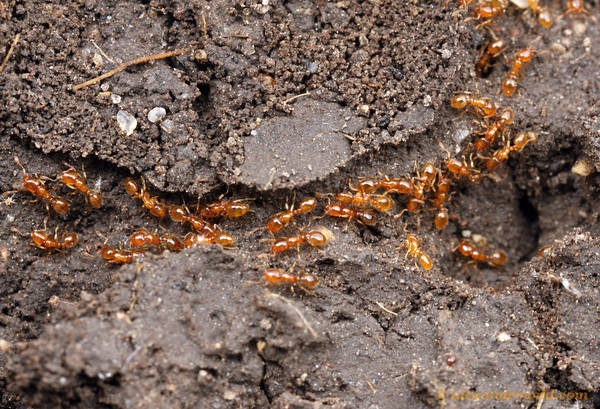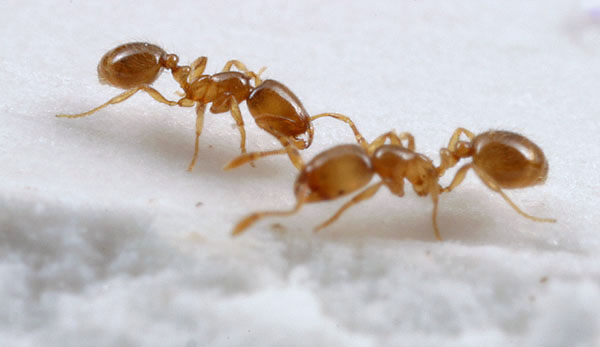Habitat
Thief ants live in colonies smaller than the average colony size
of ants (Texas A&M University, 2010).
There are normally about 100-1000 ants in a colony of thief ants (Smith,
1965).
Not only is the species Solenopsis molesta found in
Wisconsin, it is native to the United States and therefore can be
found throughout the country (Texas A&M
University, 2010). For example, a handful of states that thief
ants can also be found in include Minnesota, Missouri, North
Carolina, Oklahoma, and Washington (BugGuide, 2013).
They
can nest in a wide variety of environments because they are
extremely adaptive. Some examples of places that Thief ants nest in
are; top soil, bricks, stone, decaying matter and in the structures
of homes (Texas A&M University, 2010).
It is common for the thief ants to live in homes because they
possess the ability to nest in the framework of the house. They are
likely to make nests in houses to escape hot weather (Texas
A&M University, 2010).Nests are often difficult to locate
for the thief ants because they have small opening and are often
located under rocks (McColloch, 1916).
The thief ant use their small size to their advantage even when it
comes to nests. For example, the chambers in the nests are connected
by small galleries that only the thief ants can fit through. This
prevents other large intruders from having access to all the
chambers of the nest (McColloch and Hayes,
1916).

One benefit of having this species within
other populations is that they attack many unwanted species (Hayes,
1920). Find out which ones in our section on
interactions section. It has been observed
that during cold temperatures most ants stay together for warmth.
During cold months they are often found underneath the ground and
stay in lower areas for the whole winter (Hayes,
1920).
The thief ants have often been reported in past due to their
tendency to damage crops. For example, there are reports or these
ants eating the inside of corn to access the oils from the kernel (McColloch
and Hayes,
1916). The corn often looks untouched on the outside but due to the
infestation of these ants it has a huge impact on all the farmers
crops. Other crops that the thief ants infest include apples, plums
and other vegetation (McColloch and Hayes, 1916).
